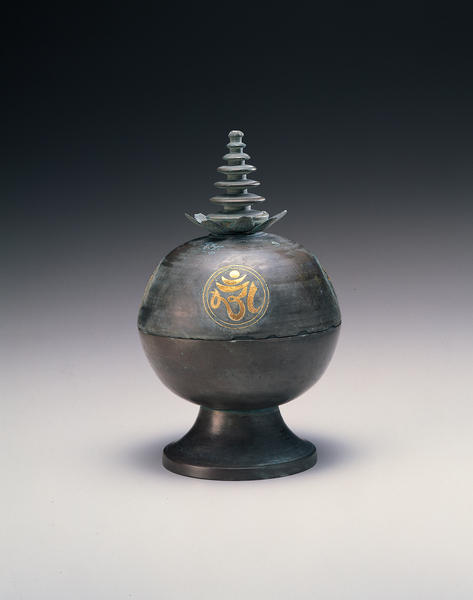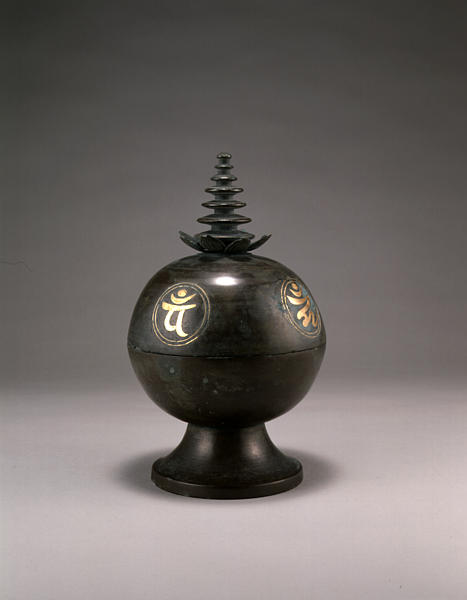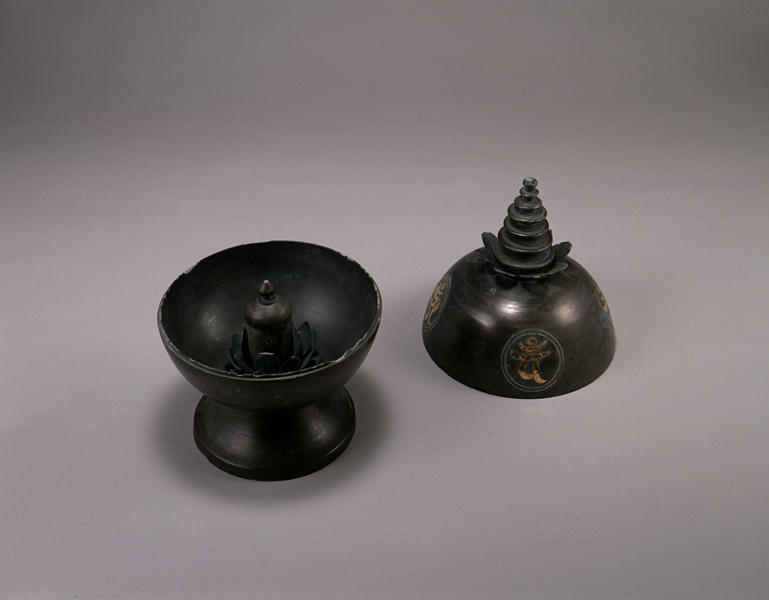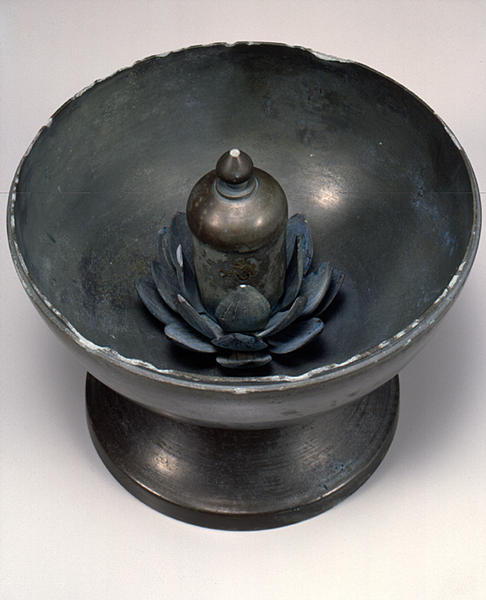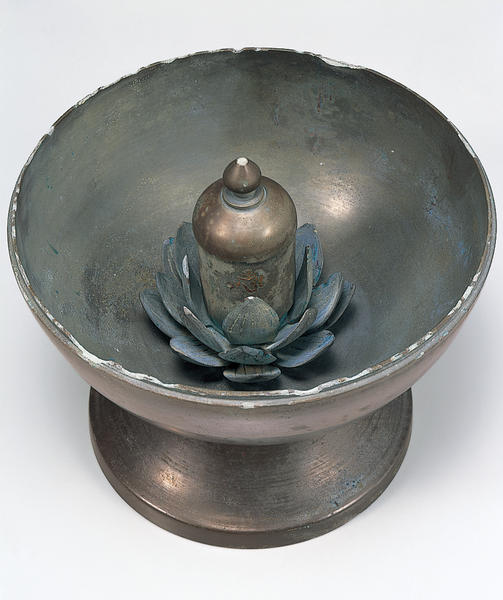塔形舎利容器
- 高麗時代
- 14c
- 青銅金象嵌
- H-22.6 D-14
解説(開館1周年記念展)
この塔鋺形の容器は頂部に蓮華に乗った7段の傘蓋をもち,蓋を開けると蓮台の上に,小さな円筒形に屋根が付いた青銅製の舎利容器が収まっている。
傘蓋は蓋の上部を突き通し,裏からかしめ止めている。器内の蓮台は4枚の花弁を十字形に立ち上げた青銅板を魚鱗葺きにして5段に重ね,各花弁の表裏には5本の線で葉脈を刻み,生き生きとした蓮華を表現している。蓮肉の表面には丸鏨で種子を打ち出し,蓮茎が花弁を通って身の底でかしめ止めされている。内容器の蓋の合わせや,その器底と蓮台との接合部はそれぞれ印篭蓋風に刳り込み,細い器の内側にも轆轤目を走らすなど,総体に丁寧な造りである。
蓋部の四方には金の線象嵌による二重円の中に4種類の梵字が同じ金で平象嵌され,内部の舎利容器の四方にも同様の梵字が象嵌されている。これらは金剛界大日如来を含む4尊と思われるが,どのような法流を汲むものかはわからない。良質の青銅や優れた作行きにも関わらず,梵字がかなり崩れていることから考えて,高麗も末期のものと思われる。
この塔鋺の形は,法隆寺の玉虫の厨子に僧が捧げ持った香炉として描かれるなど古くから存在が確かめられているもので,もとは釈迦の墓であるストゥーパ(塔)の形を模した容器である。インドで貴人にさしかけた傘を頂部に表現し,蓮台の上に仏舎利が安置される姿は舎利容器に相応しく,多くの作例が見られる。
Catalogue Entry
The container consists of two parts: a cover topped by a seven-layer parasol on a lotus flower. When this lid is removed, it reveals a lotus flower base on which a small bronze cylindrical reliquary is placed. The reliquary itself has a small button-like protrusion on top.
The lower part of parasol comes through the cover and is attached to it from the interior. The lotus flower base inside consists of five sets of four bronze lotus flower petals, with each side of the petals incised with five lines representing veins. The lifelike lotus petals are placed at the center of the bottom piece and arranged like fish scales. In the center of the flower, designs representing lotus seeds are hammered out on the outer surface of the cylindrical stem of the flower and this stem goes though the bottom and is fixed at the bottom of the base. The present reliquary has been carefully made overall, judging from the perfect fit of the lid that slides on tightly onto the recessed seat of the reliquary reminiscent of the fitting on an inro as well as the markings resulting from smoothing the interior of the small container by means of a lathe.
On each of the four sides of the cover, a Sanskrit letter enclosed in double circles is produced in gold inlay. The reliquary inside has the same four Sanskrit letters in gold inlay. These letters perhaps refer to the Four Great Buddhas including Dainichi Nyorai (s: Vairocana) of the Diamond World (s: Vajradhatu) in Esoteric Buddhism, but the source of this symbolism is uncertain. They can be dated in the late Koryo period, considering the fact that the Sanskrit characters deviate considerably from their standard shapes, despite the high quality of the bronze and fine work.
The shape seen in this reliquary has been used from ancient times. In Japan, it corresponds to a censer that a monk depicted on a side panel of the Tamamushi Shrine in Horyuji Temple holds in his hand. This shape is based on the construction of the stupa, a reliquary for the remains of the Buddha. The design of this reliquary, in which the parasol symbolizes what shaded noblemen from the sun in India and the lotus flower serves as the base for a reliquary, is not only appropriate, but its overall shape is quite common for reliquaries, as documented by a number of specimens.
